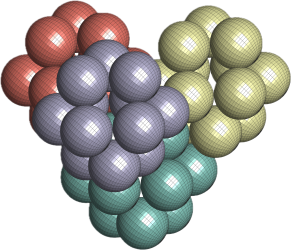I wanted to test if the hIGO packing algorithm would find the Cairo pentagonal tiling. According to the Wikipedia page the tiling has the symmetry of the group p4g. It took me a while to realize that I can’t get the tiling by packing irregular pentagons in p4g. The motif is actually a square with a pattern inside. At least I’ve got to test packing of squares in p4g. The output density is 0.999999987587046.
Left: Found configuration; Right: Zoom of the configuration










































